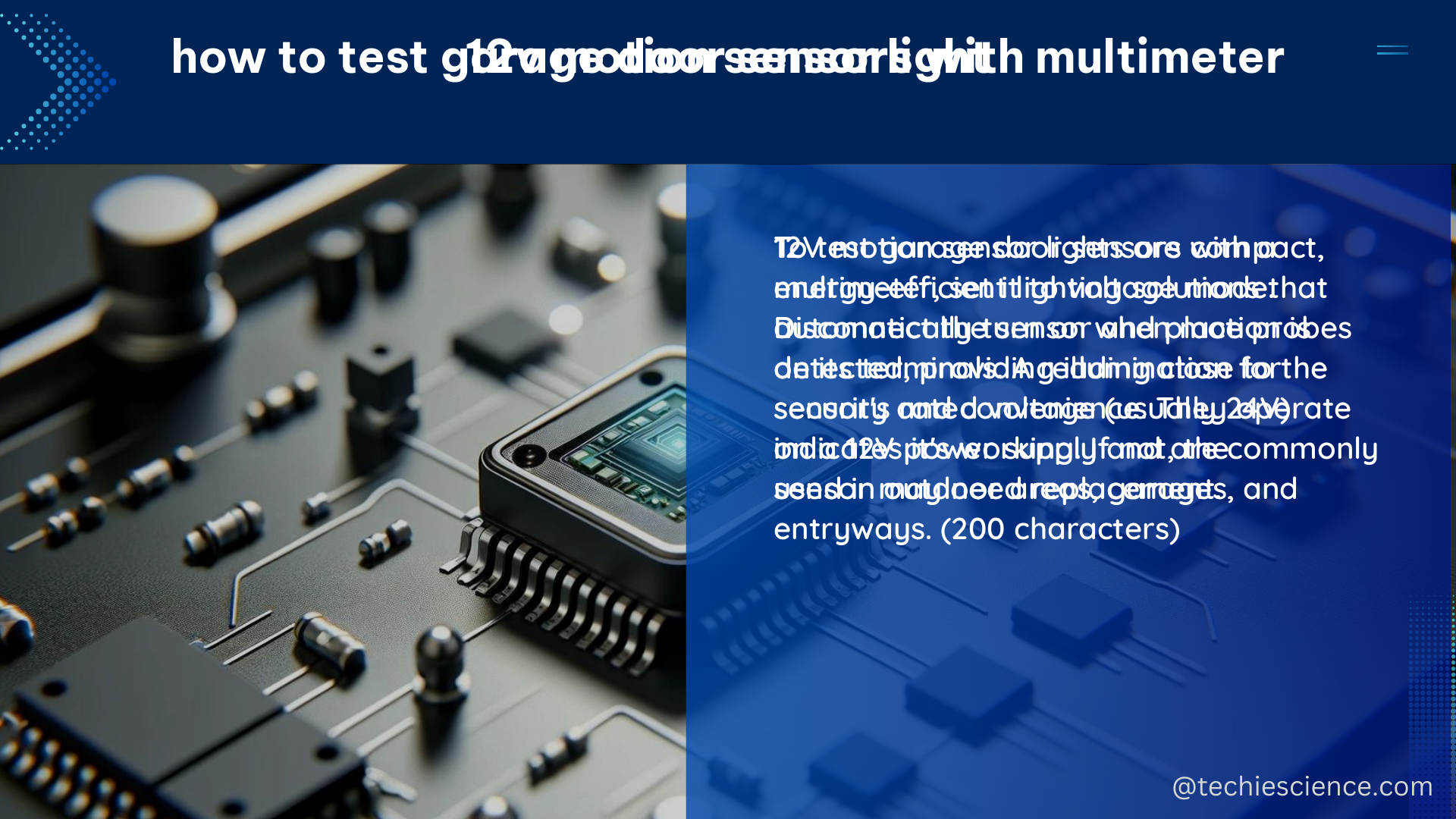12V motion sensor lights are a popular choice for outdoor lighting applications, providing automatic illumination when movement is detected within the sensor’s range. These versatile devices offer a range of technical specifications and hands-on installation details that are crucial for DIY enthusiasts and professionals alike.
Understanding the Basics of 12V Motion Sensor Lights
12V motion sensor lights are powered by a 12-volt direct current (DC) power source, typically a battery or a transformer connected to a mains power supply. These lights utilize passive infrared (PIR) sensors to detect movement within their field of view, triggering the illumination of the connected lights.
Wiring a 12V PIR Motion Sensor
The forum post referenced in the initial answer provides valuable insights into the wiring of a 12V PIR motion sensor. The 3-wire setup involves the following connections:
- Power Connection: The motion sensor requires a direct connection to the 12V power source, typically the positive terminal of the battery.
- Light String Connection: The positive end of the light string is connected to the output of the motion sensor, allowing it to switch the lights on when movement is detected.
- Ground Connection: The negative end of the light string is connected directly to the negative terminal of the 12V power source, completing the circuit.
It’s important to note that the motion sensor acts as a relay, requiring its own dedicated connection to the power source to function properly.
Understanding PIR Sensor Technology
The Panasonic FAQs document provides a deeper understanding of PIR sensor technology. PIR sensors are passive infrared devices that detect changes in infrared radiation caused by the movement of objects within their field of view. They do not emit any infrared radiation themselves, making them energy-efficient and safe for use in various applications.
Technical Specifications of 12V Motion Sensor Lights
The Amazon product page for the Macarrie 12V/24V PIR Sensor LED Motion Sensor Light offers the following technical specifications:
| Specification | Value |
|---|---|
| Voltage Range | 12V – 24V |
| Current Rating | 100mA |
| Sensing Angle | 110 degrees |
| Detection Range | Up to 7 meters |
These specifications are crucial when selecting the appropriate 12V motion sensor light for your application, ensuring compatibility with your power source and the desired coverage area.
Troubleshooting and Optimization

The Stack Exchange post highlights a common issue encountered when using 12V motion sensor lights: the sensor’s output voltage may not be sufficient to directly power 12V LED strips or other high-voltage components.
Boosting the Sensor Output Voltage
To address this problem, the user explored various step-up modules to increase the sensor’s output voltage. However, most of these modules require a minimum input voltage of 3.5V or higher to function correctly.
One potential solution is to use a voltage booster or a DC-DC converter to step up the sensor’s output voltage to the required level. This can be a simple and effective way to ensure that the motion sensor can properly trigger the 12V LED strips or other high-voltage components.
Customizing and Integrating 12V Motion Sensor Lights
The forum post mentioned that the user plans to separate the lights into three groups, each with its own combination of lights to light up various things. This approach allows for greater flexibility and customization, enabling the user to tailor the lighting setup to their specific needs.
When integrating 12V motion sensor lights into a larger system, it’s essential to consider factors such as power consumption, wiring, and the overall layout of the installation. Proper planning and attention to detail can help ensure a seamless and efficient integration of the motion sensor lights.
Conclusion
12V motion sensor lights offer a range of technical specifications and hands-on installation details that are crucial for DIY enthusiasts and professionals alike. By understanding the wiring, sensor technology, and troubleshooting techniques, you can effectively integrate these versatile lighting solutions into your projects and create a more secure, energy-efficient, and customized outdoor lighting setup.
Reference:
– Forum post on wiring a 12V PIR motion sensor
– Panasonic FAQs on PaPIRs PIR motion sensors
– Amazon product page for Macarrie 12V/24V PIR Sensor LED Motion Sensor Light
– Stack Exchange post on boosting PIR sensor output voltage

The lambdageeks.com Core SME Team is a group of experienced subject matter experts from diverse scientific and technical fields including Physics, Chemistry, Technology,Electronics & Electrical Engineering, Automotive, Mechanical Engineering. Our team collaborates to create high-quality, well-researched articles on a wide range of science and technology topics for the lambdageeks.com website.
All Our Senior SME are having more than 7 Years of experience in the respective fields . They are either Working Industry Professionals or assocaited With different Universities. Refer Our Authors Page to get to know About our Core SMEs.